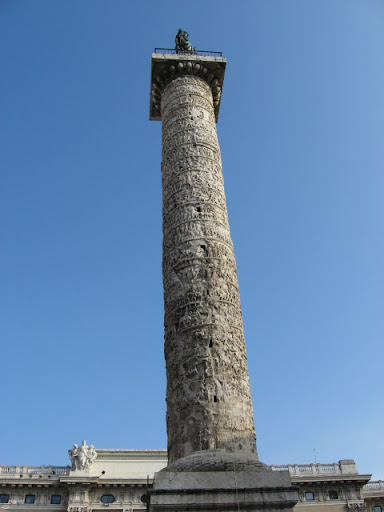 I have recently been reading T. S. Eliot’s essay Tradition and the Individual Talent. The essay discusses the connection between the concept of tradition and innovation in the arts. I especially liked this passage:
I have recently been reading T. S. Eliot’s essay Tradition and the Individual Talent. The essay discusses the connection between the concept of tradition and innovation in the arts. I especially liked this passage:“To conform merely would be for the new work not really to conform at all; it would not be new, and would therefore not be a work of art…. But the difference between the present and the past is that the conscious present is an awareness of the past in a way and to an extent which the past's awareness of itself cannot show….” (5, 6)
This part of the essay reminded me of what my friend Alex had been telling me about Ara Pacis, an example of very modern architecture in Rome. Ara Pacis is a stark white, geometrical building surrounded by the many warm-colored buildings along the Tiber. It had been argued that the building does not match its surroundings. Seen through the context of Eliot’s Tradition and the Individual Talent, Ara Pacis is actually “traditional” in the fact that it breaks the conventional mold.
Another facet of this dualistic thinking is the mix of Christianity and Roman symbols throughout the city. Many of the Roman monuments were Christianized during the Middle Ages when the popes were trying to erase the pagan memorials. The home of the Mother Church was built upon the great pagan city. Roma celebrates the synthesis the old within the new, the pagan within the Christian. The above picture is an ancient obelisk with a statue of (what I believe) is St. Peter on top. This illustrates what Eliot described as “This historical sense, which is a sense of the timeless as well as of the temporal...together, is what makes a writer [or any artist] traditional..” (3)
“No poet, no artist of any art, has his complete meaning alone. His significance, his appreciation is the appreciation of his relation to the dead poets and artists.” (4)
Some musings from a hopeful traditional…
For pictures of Ara Pacis, click here.
To read Tradition and the Individual Talent, click here.
